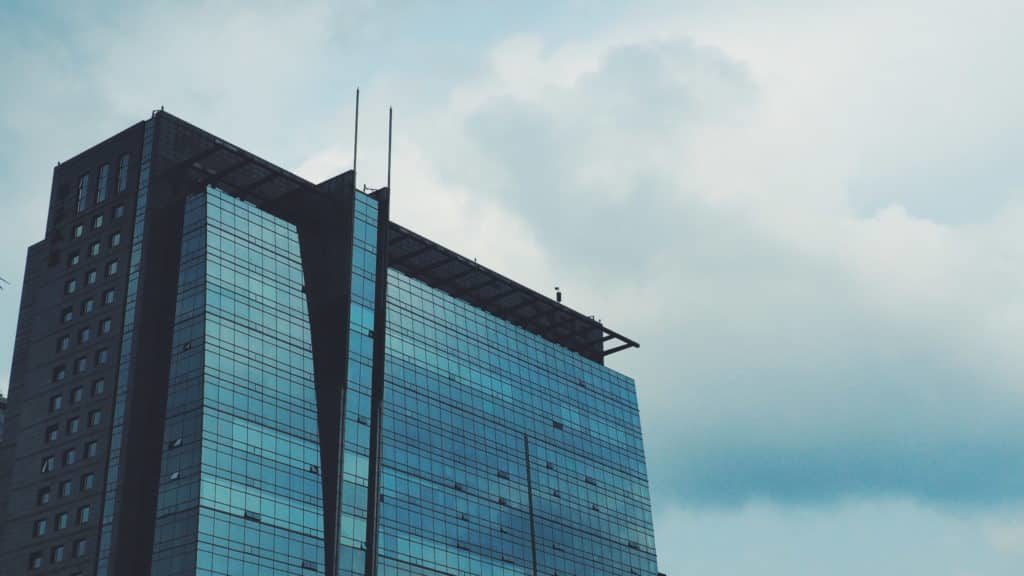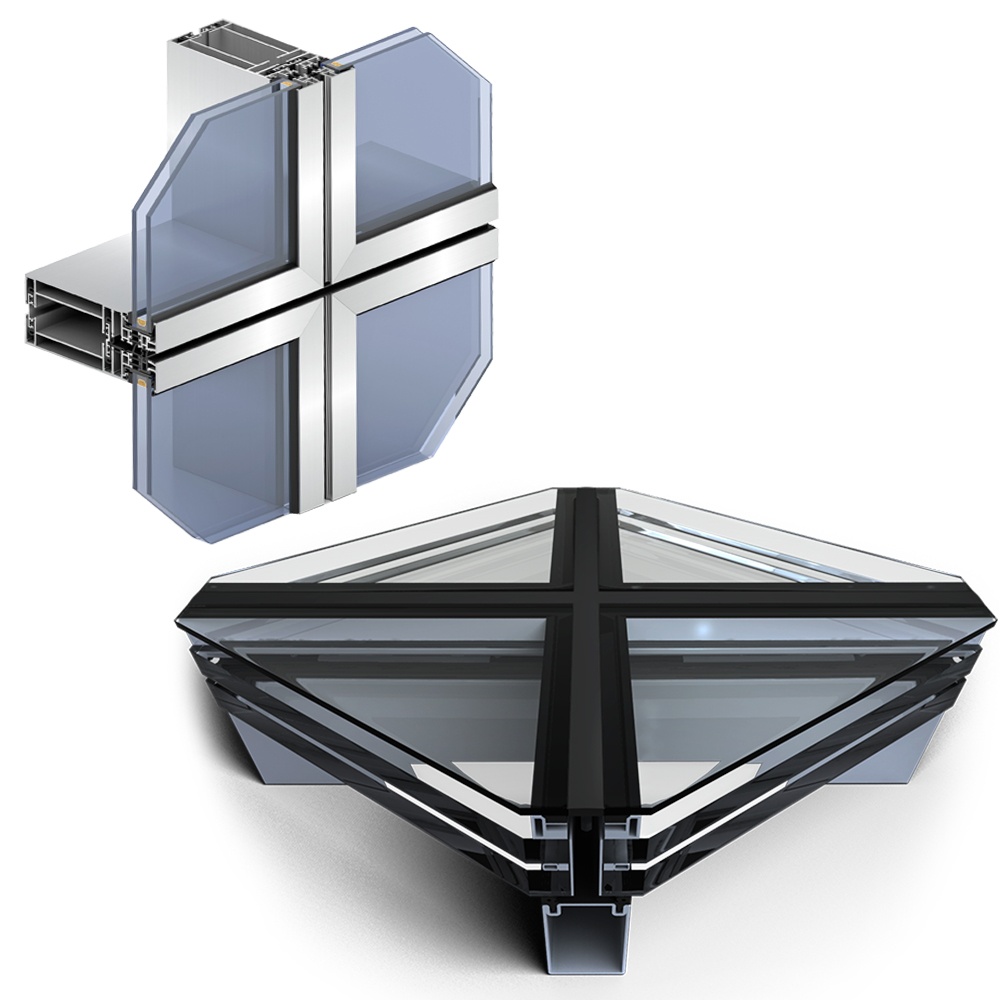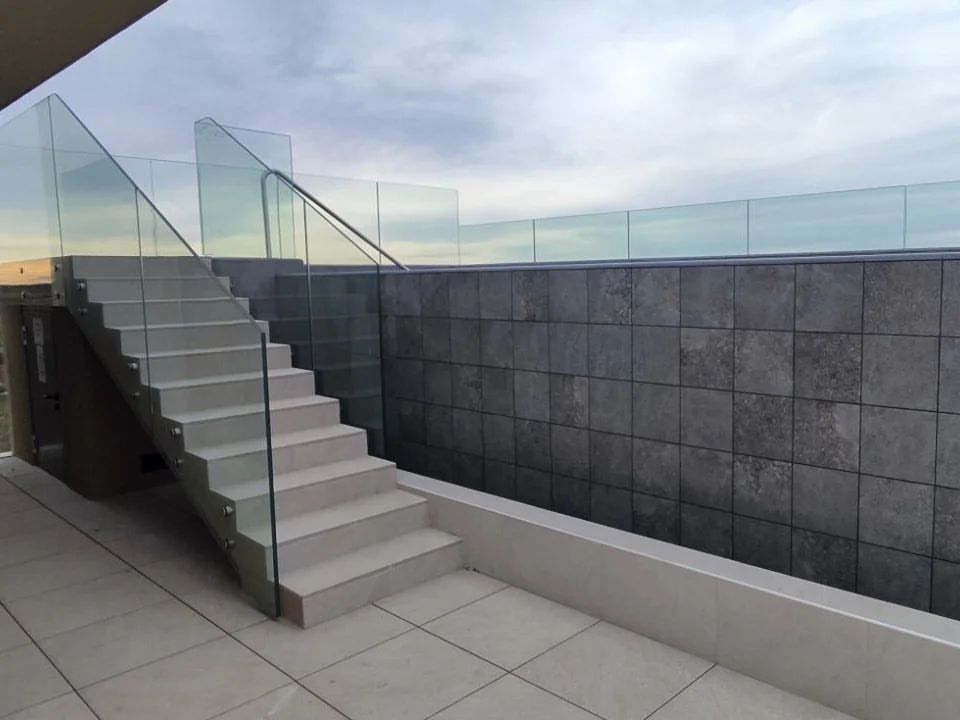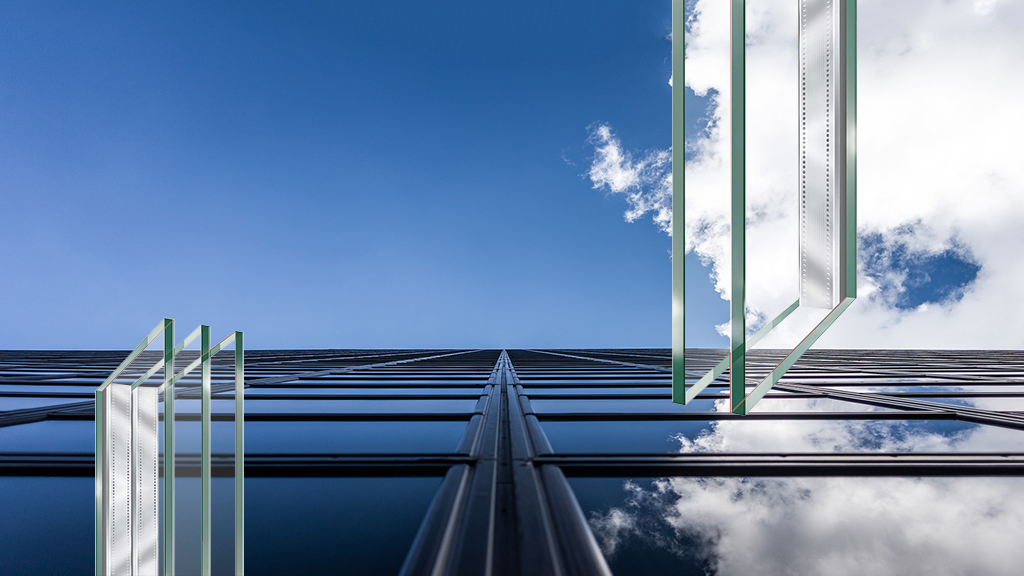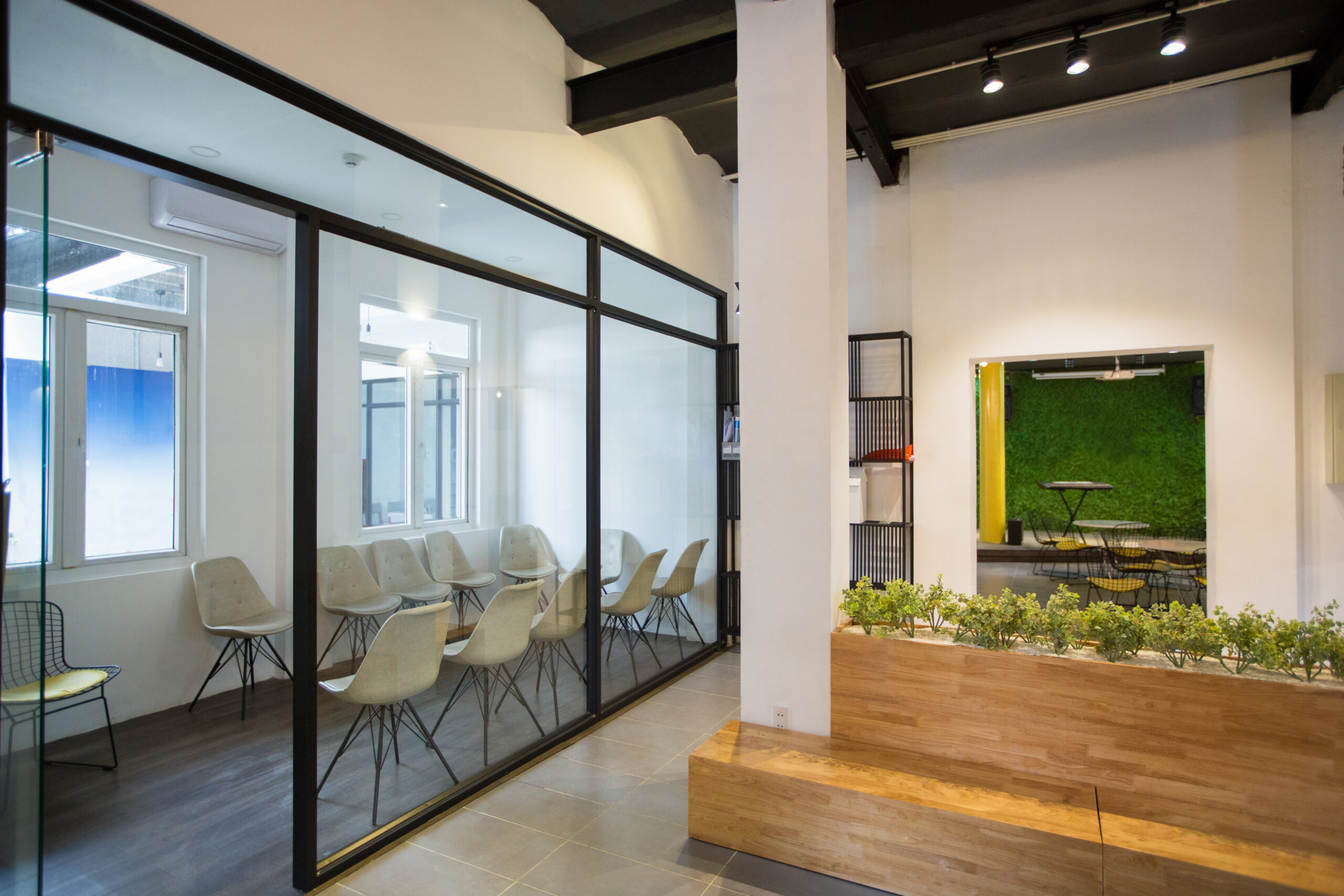These are the most common types of glass facades. They got their names because of their look. More about the differences and characteristics of each type are presented below.
Structural Facades
This type is appearing mostly on commercial buildings such as banks, hotels, and business centers. Structural facades have a unique, solid glass look. Their appearance is astonishing, and there are no visible aluminum parts on it.
How the glass is attached to the supporting frame? The supporting frame– supporting web is created of aluminum. And the glass is glued to that frame with special silicon glue.
And what about windows?
When it comes to windows, the philosophy is the same – the overall unique glass look cannot be affected by any means. So the windows can be opened only to the outside (around the upper horizontal axis).
Besides high aesthetical benefits, structural facades are astounding thermal and sound insulators. The aluminum supporting frame is made with thermal break, which drastically improves the thermal characteristics of the structural façade, while the glass, on the other hand, is thermal-insulated (in different sizes and insulation characteristics).
For outside glass, it’s recommended the usage of tempered glass while the inside glass can be made out of semi tempered glass.
Structural façade benefits:
– Protection from all atmospheric conditions
– Astounding thermal insulation
– Astounding sound insulation
– Absolute protection from water and similar weather conditions
– Usage of different types of glass and glass thickness
– Money-saving
Semi Structural Facades
Semi-structural facades are made similar to structural facades (support aluminum wall on which glass panels are attached), but in this case, aluminum parts are semi-visible. So the overall look of the façade is not identical to the structural type.
The visible part of the aluminum is minimal. Windows can be opened only vertically, on the outside around the upper axis, just like it’s the case with structural facades. In most cases, the aluminum support wall is made with thermal breaks, while the glass panels are made according to specification and the client’s request (single or double, tempered, etc).
Semi structural façade benefits:
– Precisely defined structure allowing adaptations to deformations caused by earthquakes, oscillations, or expanding/shrinking of the aluminum.
– Structural facades are easily adaptable to any kind of structure or façade shape
– Highly durable to statical and dynamic pressure
– Each façade panel is framed with a narrow frame; this improves the security and stability of each glass panel
– A unique look
– EPDM sealing makes façade water-proof
– Glass panels are used in the thickness range from 6mm to 32mm
– Usage of aluminum profiles with thermal breaks and thermally insulated glass
We suggest you consult professionals from companies such as Savabien, just to make the final choice easier for you.

